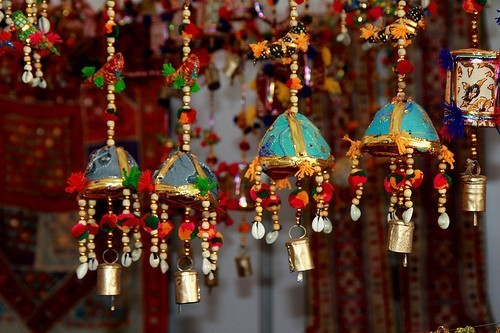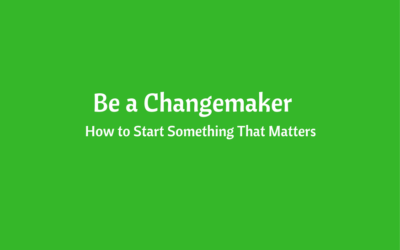Indian Craft and Social Entrepreneurship
It was Monday afternoon and I was taking a sip of Green Tea sitting in front of a computer, on the Facebook chat session, with some professional creative Talent of India. I had an opportunity to discuss with one of the professional, who is a qualified product designer from Indian Institute of Craft & Design, Jaipur. He is working with one of the reputed firms who design furniture, lamp etc. products for celebrity consumers. His name is Kamal Sharma, well what I have also realized in his case was, as he stated that he is also working on his Idea. He said he is interested in Health and Educational reforms within the artisan’s group, to prepare them to produce the quality handmade product. He was working in or around Baster however due to lack of support from the government or maybe unethical work practice of the organization, he moved to New Delhi and working with the company while developing his idea that is strong and makes difference to the community.
Initiative and risk with the cultivation of the leadership skill is something that may not be taught by any design or art school. People even do not bear with it. One needs to realize it and develop it by working on issues. A student who completes his study can be called a Graduate or doctor or lawyer or designer by the qualification which they receive however in case of the true designer there is a two scope of practice in the international scenario, which also includes India too, that is, 1. A one who is following and 2. A one who has vision, idea and inspire others to follow his idea.
It is also known fact that people generally tend to follow for example, if X student who may be creative, has got an opportunity for Diploma Project or Placement in ABC place for Pottery work and Y professor suggest to join this company as it is well organized, they simply do it without own views which in terms of career mean that they are risk-averse however number 2 category designer is creative and risk-taker and have the vision to see future of the product or the progress of the particular project in their present tense and have understood how an idea or appropriate design would perform in future. They also have a capacity to be inspired by others, to listen to other’s idea, learning from the critics and gut feeling (you need to listen or consider your gut saying/your inside, many times it is true) to forecast the development of the society, industry, and design by their net contribution.
Generally, designers (including Designer student) in this category are an independent working designer, they work on their idea and skills involved in it are critical as they need to inspire the community for the fund, marketing and requirement of necessary resources for the installation of their social idea. Any project, in my view, involved rural artisan who produces items that are made by hand and green by nature, shall be called social project and a person or a group of people who run this project with his idea shall be called Entrepreneur. In the case of Kamal Sharma, I see him as a future social Entrepreneur.
Social Entrepreneurship is a new and practically applicable concept for Indian designers who work in design development or innovation. It is something that could be learned by the appropriate mix of academic supply, work experience, owns an experiment with the skills and leadership quality. You need Idea for it then you need to learn the ‘processes.
A process is something that involves the development of your idea in theory thereafter understanding its social, economic and legal context and how you are going to implement it and when you are done with it, it needs practical consideration is it worth doing or not?.
Social Entrepreneurs are the valuable asset of the nation because where the bigger business or organization and sometimes even the government itself fails to reach, SEs can easily reach there. Considering another fact that they are working on a very specific idea with a great amount of focus, they are able to develop a particular part of the community. I have a standard example for it, let’s talk about one of the creative social entrepreneur (Designer Graduated from National Institute of Design) (in my view) of India who also represents design and innovation talent of India to the global community and organization, namely, Mr Jogi Panghaal. Following is my finding from the interview taken by Dr Caroline Nevejan of the ‘Witnessed Presence and Systems Engineering’ project that “Mr Panghaal is concerned with the shift from product to service design, with a special focus on how craftsmanship and traditional artisan communities can be an inspiration for the design of services in current modern societies.
Panghaal works with artisans to use their traditional skills to find new markets for their old/new products as well as that he works with industry to enhance concepts of design. For many years Panghaal was a contributor to Doors of Perception, a conference, and network in which design, industry and social science collaborate to develop new ideas for service design.”
Mr Jogi P., In conversation,
with one of the Intern
Alright, now it is something that the person develops within its own scope of practice and creativity to analyses critical skills and potential opportunity in the market where consumer dominate. This Example also refers to the greater responsibility of SE designers to work for the welfare of the community. It may be possible that you have a good idea but if the consumer does not demand you should not make it, however, creative people wonder and research is it possible to turn or shift or modify ‘non-working’ product into a demand, how could it be done and what inputs/Intervention needs to be made? Now designer who works as an employee (some are exceptional) under the entrepreneurs, eventually following their vision, adding values to their vision or simply doing A2Z means start from A and Finish at Z and again start from A and so on. It is an understandable industry need both kinds of working designer however in terms of Indian designing context, India demands as much as possible social entrepreneurs who develop design skills and uplift rural artisan who has already some existing skill set and to enhance their quality of life.
An economy largely relies on SEs designers as the more capable they make to an artisan, the less burden comes to the economy and due to increasing income level of artisan, it also prevents rural population moving to the urban area for job search which balanced population proportion considering the limitation of the land. Another point is design and value management where I consider India as a growing talent in terms of a number of students produced by Indian design and art institute with theories and some work experience however as far as it is a concern for leadership skills and SEs skills, we have a long way to go. There is a need to recognize by the institute and most importantly designer student that, while you are doing your internship on the specific product, you should also take interest in management, finance, forms of the organization, demand, and supply of the product and how design intervention in it affect its demand cycle.
Relying only on the skill makes you a technical expert as many times it has been seen that it prevent designer using their creative skills in practical world as any business entity or just say consumer consider price, quality, design, sustainability and the make of the product. Well think out of the box says that, don’t learn design but learn design management, its theory, and its application. There is a huge pay for this type of designer and at the same time, it keeps you safe in a competitive workplace and gives you an opportunity to become a leading designer in a real sense.
David Bornstein, Social Entrepreneurs
SEs designer in India needs to be recognized by the Government and India Corporation. Nowadays Companies in India have set up an independent section for their corporate responsibilities that sponsor such a project that develops an economy of the rural area or artisan life quality. It is not possible to talk about the scope of such sponsors in this article. But tools like Facebook and Google may provide great help. Independent SE’s can work better in some area than any NGOs (Well it is a question that apart from some NGOs, NGO as a social developer really want to develop community or people involved in it satisfying their personal growth, it is sort of political issues but it is affecting life of the artisan, Independent search can reveal all the information, independent means refer the numbers, meet directly with the people involved in some program instead of the people referred by or number given by such organizations) who may work in the same area as he/she will have direct opportunity to work with artisan, product development, consumer or buyer for his small enterprise, let’s call it growing enterprise.
It is also seen that Many India designer who can be a real talent, are dead property in terms of creating values of the art and culture of India by designing their product. They generally, work and follow on academic learning with no capacity to make or accept changes into it. They get graduation and join some company and may get promotion and end up at retirement. They have opinions on many subject to debate however they lack initiation to be a change itself.
Product design and Industrial design is growing career and SEs who have skills of it that means the ability to design product considering technical aspect, demand, and supply chain, price factor, and artisan’s fair prize method along with the knowledge of forming teamwork, leading them and human skills to deal with artisan’s, consumer and co-worker, eventually called an Active SEs. And a Qualified or Unqualified talent who is designer work as SEs, within such criteria, shall be called a True and Valued designer.
It will be a very automatic process that consumer and business group both would demand and appreciate them. These are the people who represent and also design the Indian design industry and have a direct contribution to the development of rural economy and life of the artisan. It is also trending to make artisan ( an unqualified person who craft product) an entrepreneur. It is, in everybody’s knowledge that people have to study something to survive and many times we choose a certain career for the number of reason, however, your own interest with the preparation to make owns sacrifices with ZERO excuse and continuous improving human, technical and design skills, lead you at the top in your career and it is an essential requirement for the practical success in the career you choose. The idea explains in this article is applicable to Handicraft, product, and industrial design skill, while one vision him/herself working as a SEs.
Otherwise, we know that we are studying something and in one or another way we will have a degree in design. We might be working as a designer and we might be calling ourselves with the support of So-called praises, Social Entrepreneurs, but we know where we are, our company know where they have put us and your consumer knows how worthy you are to them, no matter whatever you design or appreciation or award received by any organization, well It is also important if your consumer even recognizes you, for it, there is a new word, “Brand Management”. But we will discuss it some other time.
A Very Quick Case Study for Designer Student/Professional for SEs
Delhi Haat (New Delhi, INDIA)brings to you the art and handicrafts of India created by the artists and craftsmen in traditional techniques, designs, and colours. Explore and experience the enthralling world of Indian Artifacts, Painting, Metalware, Stonework, Woodwork, Terracotta, Jewelry, Lac and Glasswork, Leatherware, Blue Pottery, Home Decor items and traditional Indian Puppets. Photo & Description by – Brajeshwar oinam
Now Study your perspective as a Designer Student and Designer SEs and Compare based on the above-given Information in terms of what opportunity you see in India and how could it be used for income generation, Rural development and design promotion/intervention, the result you may find maybe a critical analysis. You can also customize it to you respect area like metal craft, pottery or ceramic etc.










0 Comments